Jun 30, 2019
Jun 24, 2019
Run theses simple tests to detect food adulteration
Ludhiana, June 23
Food adulteration can pose a serious risk to public health. Getting food tested in laboratories may not be feasible every time as it entails investment of time, effort and money. The good news is that in many cases sensory evaluation quick tests can help in determining whether or not the food product is adulterated.
The Food Safety and Standards Authority of India (FSSAI) has given some simple tests to detect adulteration in food.
Chilli powder is usually adulterated with brick powder, salt powder and talcum powder. In this case, the genuineness can be ascertained by taking a teaspoon of chilli powder in a glass of water and examining the residue. On rubbing the residue, if any grittiness is felt, it indicates the presence of brick powder or sand or both. If there is any white residue with a soapy and smooth feel, it suggests the presence of soap stone.
Sugar is another frequently adulterated foodstuff. Richa Batra, a city-based homemaker, says that she bought sugar that did not taste quite right. It seemed adulterated. The FSSAI suggests that to test sugar, rub a little of it on palm and smell. If adulterated with urea, it will smell of ammonia. Or you can dissolve a small amount of sugar in water. If adulterated with urea, sugar gives a smell of ammonia.
Most of the times, the public remains unsuspecting of adulteration in atta (wheat flour). Yet it is very often adulterated. The normal taste of chapati prepared out of atta is somewhat sweetish whereas those prepared out of adulterated atta will be insipid and tasteless.
Among the spices and condiments, turmeric powder (haldi) often suffers the onslaught of adulteration. To detect artificial colour in turmeric powder, add a little of this powder in a glass of water. Natural turmeric powder leaves light yellow colour while settling down. Adulterated turmeric powder leaves a strong yellow colour in water while settling down.
Sample this
- Most of the times the public remains unsuspecting of adulteration in atta (wheat flour). Yet it is very often adulterated. The normal taste of chapati prepared out of atta is somewhat sweetish whereas those prepared out of adulterated atta will be insipid and tasteless.
- The Food Safety and Standards Authority of India suggests that to test sugar, rub a little of it on palm and smell. If adulterated with urea, it will smell of ammonia.
Thiruvananthapuram: 24 hours food safety toll free number
The toll-free number has received around 200 to 250 calls between April and June this year.
THIRUVANANTHAPURAM: As part of its effort to effectively address customer grievances, the Kerala Commissionerate of Food Safety for the first time is gearing up to launch a grievance redressal platform which would keep the complainant on the loop.
To make the initiative a reality, it has tied up with the Citizen Call Centre run by the IT Mission for managing the food safety toll-free number – 1800-425 -1125 - which would function 24 hours.
A top official of the Commissionerate told DC that the complainant now on would get an email intimation or SMS on the status of the complaint forwarded to the concerned food safety officers across the state.
The toll-free number has received around 200 to 250 calls between April and June this year.
“The call centre would inform the complaint to the concerned food safety official in the region. Suppose if there is a mass food poisoning, the moment the call centre receives the info it would be passed on to the food safety officer, regional deputy commissioner and assistant food safety commissioner. We have given strict direction to settle the complaint within three days,” said the official.
However, the inadequate number of vehicles and food safety officers are a major handicap.
“The complaint would be dealt with depending on the gravity of the issue as we don’t have vehicles at all districts. We have taken this with the government, and they have promised to help,” said the official.
CHECK BEFORE YOU PURCHASE WHAT LIES IN YOUR RICE?
The premium priced and packaged brown rice from the supermarket may in reality be whiter and more polished than ever, and the so-called ‘diabetic friendly’ variety, nothing more than parboiled white rice. Armed with a stereo-zoom microscope, food scientists from Madras Diabetic Research Foundation (MDRF) decided to put 15 types of supermarket ‘healthy’ rice grains to the test. What they found was that in many cases there wasn’t a grain of truth in the claims mentioned on the packets.
“With more diabetic patients approaching us with newer varieties of rice that claim to be zero cholesterol and sugar-free we decided to examine 15 of the popular ones,” says MDRF food and nutrition research scientist Sudha Vasudevan, one of the co-authors of the study recently published in the Journal of Diabetology.
The biggest shocker was a brown rice brand that proclaimed an 8.6 glycemic index (GI), a value Vasudevan says has never been reported as per the international GI table (the lowest GI of rice is around 40). GI is a relative ranking of carbohydrate in foods according to how they affect blood glucose levels. A GI value of less than 55 is considered low, while 70 and above is high.
“On examination the rice was found to be parboiled brown rice. There were fissures on the surface and a mild disruption of the bran and germ layers,” says MDRF food scientist Shobana Shanmugam, also a co-author. Fissures and a disrupted bran and germ layer, she says, make the rice mushy when cooked as more water is absorbed by the grain, intensifying its starchiness. This in turn increases the GI.
What one needs to understand, says Vasudevan, is that all brown rice may not be low GI. “The other misconception is that hand-pounded rice is healthy, but findings show it has a GI similar to polished white rice because of the abrasions on the grains,” she says. Vasudevan explains that bran is rich in fat and tough to cook to a soft consistency, so Indians tend to cook it longer. “Indians add a lot of water to brown rice and that breaks the bran layer.” MDRF recommends brown rice to be cooked with a 1:1.5 cup water ratio as opposed to the usual 1:3.
Minimally polished rice also have a high GI, says Vasudevan. “Parboiled rice is also polished and therefore not that healthy. Parboiling is done to increase vitamin B and for a longer shelf life, but it removes the germ and bran layer, resulting in higher GI.”
The other tall claims, says Shanmugam, were sugar free and zero cholesterol options. “No plantbased food has direct cholesterol, but in excess they can cause triglyceride and cholesterol levels to go up.” As for sugar-free rice, she says, the starch in rice is converted to glucose on digestion, so in effect there cannot be sugar-free rice.
“The key is to not get carried away by labels. And to remember that rice needs to be eaten in moderation,” says Vasudevan.

Jun 23, 2019
பாலீஷ் அரிசி... பளபளக்கும் காய்கறிகள்... விஷமாகும் உணவு... தீர்வு என்ன?
எப்போது தொலைத்தோம் இயற்கையை? அதிக விளைச்சலைத் தேடி, அதிக லாபத்தை நோக்கி ஏற்படுத்தப்பட்ட அறமற்ற பயிர் செய்யும் முறைகளே, இயற்கையைப் பின்னுக்குத் தள்ளி செயற்கை முறைகள் கோலோச்சியதற்கான முதல் காரணமாகும்.
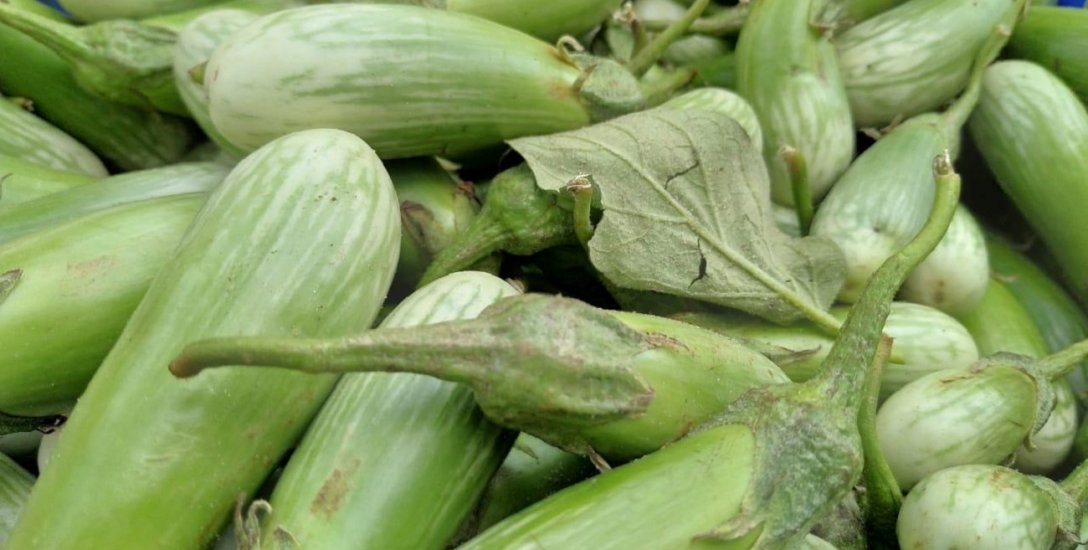
இயற்கையை விட்டு வெகுதூரம் சென்றுவிட்டதால் பல்வேறு நோய்களின் பிடியில் சிக்கிக் கிடக்கிறோம். கோழி முட்டையைக்கூட செயற்கையாகச் செய்து விற்கிறார்கள். பாலில் ரசாயனக் கலப்பு என பட்டியல் நீள்கிறது. இதனால் ஏற்பட்ட உடல்நலப் பாதிப்புகளை மனதில் கொண்டு, மீண்டும் இயற்கையை நோக்கி படையெடுக்கத் தொடங்கியிருக்கிறோம். உணவு சார்ந்து, உடை சார்ந்து, இருப்பிடம் சார்ந்து எல்லாவற்றிலும் இயற்கையின் சாயல் இருக்கவேண்டுமென்ற எண்ணம் பரவலாக எல்லோர் மத்தியிலும் உதித்திருப்பது பாராட்டுக்குரியது. அதில் குறிப்பாக ‘ஆர்கானிக்’ உணவுகளை தேடத் தொடங்கியிருக்கிறது இன்றைய புதுயுக சமுதாயம்.
அதென்ன ஆர்கானிக்..!? செயற்கைத் தீண்டலின்றி இயற்கை முறையில் விளைவிக்கப்பட்ட காய்கறிகள், பழங்கள், உணவுப் பொருள்கள். ரசாயன உரங்களைப் பயன்படுத்தாமல், அந்தந்த பகுதியில் கிடைக்கும் இயற்கை உரங்களின் உதவியுடன் விளைவிக்கப்படும் தாவர வகைகளிலிருந்து பெறப்படும் உணவுகளை `ஆர்கானிக்' என வரையறுக்கலாம். அசைவ ரகங்களை எடுத்துக்கொண்டால், ஹார்மோன் மருந்துகள் செலுத்தாமல், அளவுக்கு மீறி அதிக உணவு கொடுக்காமல் இயற்கையாக விலங்குகளின் வளரியல்பை ஊக்குவித்து அதிலிருந்து பெறப்படும் இறைச்சி, பால், முட்டை போன்றவற்றைக் குறிக்கும்.
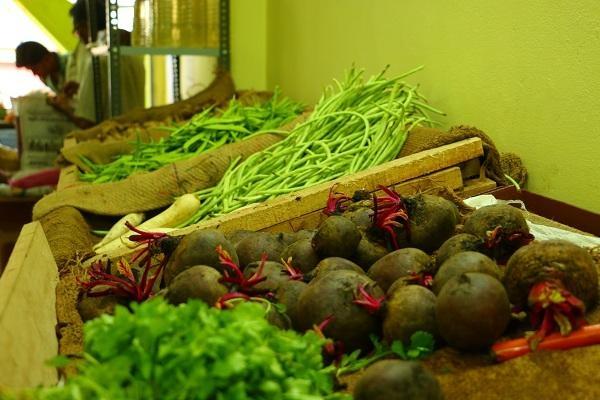
எப்போது தொலைத்தோம் இயற்கையை? அதிக விளைச்சலைத் தேடி, அதிக லாபத்தை நோக்கி ஏற்படுத்தப்பட்ட அறமற்ற பயிர் செய்யும் முறைகளே, இயற்கையைப் பின்னுக்குத் தள்ளி செயற்கை முறைகள் கோலோச்சியதற்கான முதல் காரணமாகும். செயற்கை உரங்கள் மண்ணில் நீங்காத இடம்பிடித்தன. பயிர் நன்றாக வளர, இயற்கைக்கு எதிராக வேகமாக உயர, பூச்சித் தாக்குதலின்றி பளபளக்க என பல்வேறு காரணங்களுக்காக ஆய்வுக் கூடங்களில் இருந்து பெறப்படும் செயற்கை உரங்களும், விதை ரகங்களும் விவசாய நிலங்களில் தூவப்பட்டன. நமது மரபை எட்டி உதைத்து கால் மேல் கால் போட்டு ஆட்சி செய்யத் தொடங்கிவிட்டது செயற்கை முறை விவசாயம்.
கடந்த பத்தாண்டுகளாக செயற்கை உரங்களுடன் சேர்ந்து வாழ்கையைத் தள்ளிக் கொண்டிருக்கிறோம். இதனால் யாருக்கோ என்றிருந்த புற்று நோய், வீடுகள் தோறும் ஆக்கிரமித்திருக்கிறது. சர்க்கரைநோய், உயர் ரத்தஅழுத்தம், மன நோய்கள் என தொற்றாநோய்களுக்கு அடைக்கலம் கொடுக்கும் பாதுகாவலனாக நமது உடல் மாறிவிட்டது. `இயற்கை அனைவரது தேவைகளையும் பூர்த்தி செய்யக்கூடியது. ஆனால் பேராசையை அல்ல' எனும் மகாத்மாவின் வார்த்தைகள் செயற்கை முறை விவசாயத்தின் விளைவுக்கு சாலப் பொருந்தும். உடல் மற்றும் மன ரீதியாக பல்வேறு பாதிப்புகளை சந்தித்துக்கொண்டிருக்கிறோம்.
அடுத்த தலைமுறைக்கு ஆரோக்கியமான உணவியலை சொல்லிக்கொடுத்து, அவர்கள் நோயின்றி வாழ்வதற்கான வழிவகையை ஏற்படுத்திக் கொடுக்கும் பொறுப்பு இன்றைய தலைமுறைக்கு இருக்கிறது. அனைத்தையும் ஒரே நாளில் மாற்றிவிட முடியாது. ஆனால் முயற்சித்தால் நாம் ருசித்த இயற்கை முறை உணவுகளை மீண்டும் நடைமுறைக்கு கொண்டு வர முடியும்.
இயற்கை முறையில் கிடைத்த உணவுப் பொருள்களில் இயல்பாகவே ஆன்டி-ஆக்ஸிடன்ட்கள் நிறைந்திருக்கும். உடலுக்கு நோய் எதிர்ப்பு சக்தியைக் கொடுத்து, உடலை வலுவாக வைக்க உதவும். ஆனால் பார்ப்பதற்கு பளபளப்பாகவோ, மினுமினுப்பாகவோ இல்லாமல், சில இடங்களில் லேசாக பூச்சி அரித்ததாகக்கூட இருக்கும். ஆனால் நமக்கு பாலிஷ் செய்யப்பட்ட அரிசி தானே தேவை. நிறத்தில் கொஞ்சமும் வெண்மை குறைந்திருக்கக்கூடாது. மினுமினுப்போ, பளபளப்போ குறைந்திருந்தால் அது தரமற்ற உணவுப் பொருள் என்ற எண்ணம் நமக்கு இருக்கிறது. இப்படிப்பட்ட எண்ணத்தின் விபரீத விளைவைத்தான் இப்போது அனுபவித்துக் கொண்டிருக்கிறோம்.

இயற்கை முறையில் விளைவிக்கப்படும் உணவுப் பொருள்களின் விலை சற்று கூடுதலாகவே இருக்கும். ‘ஆர்கானிக்’ என்ற பெயரில் இப்போது அறமற்ற வணிகமும் தலைதூக்கத் தொடங்கியிருப்பது தனிக்கதை, கவனம். செயற்கைத் தயாரிப்புகளை புறக்கணித்து, இயற்கைத் தயாரிப்புகளை நாம் அதிகம் வாங்க முற்படும்போது, ஆர்கானிக் உணவுப் பொருள்களின் விலையும் குறையும்.
வாய்ப்பிருக்கும் வீடுகளின் முன் அல்லது மாடியில் இயற்கை முறையில் காய்களை விளைவித்துப் பயன்படுத்தலாம். கடைகளில் வாங்கும்போது, பளபளப்பை எதிர்பார்க்காமல் `இயற்கை முறையில் விளைந்ததா’ என்னும் தர நிர்ணயத்துடன் வாங்கப் பழகுங்கள். நேர்மையாக இயற்கை விவசாயம் செய்யும் விவசாயிகளைத் தேடிக் கண்டுபிடித்து ஊக்கப்படுத்துங்கள். விலை மலிவு, கவர்ச்சியானது என்பதால் செயற்கை பொருள்களுக்கு முன்னுரிமை கொடுப்பது, சொந்தக் காசிலேயே சூனியம் வைத்துக் கொள்வதற்குச் சமம் என்பதை புரிந்து கொள்ளவேண்டும்.

இயற்கை முறையில் விளைவிக்கப்பட்ட உணவுப் பொருள்களை சீக்கிரம் பயன்படுத்த வேண்டியது முக்கியம். ஏனெனில் செயற்கை உணவுப் பொருள்களில் சேர்க்கப்படுவதைப் போல அதில் ரசாயன பிரிசர்வேடிவ்கள் சேர்க்கப்படுவதில்லை. இயற்கையில் விளைந்த அரிசியின் நிறம் சற்று பழுப்பாகவே இருக்கும். ஆனால் பட்டைத் தீட்டி அனைத்து சத்துகளும் நீக்கப்பட்டு வெள்ளை வெளேரென காட்சி தரும் அரிசியின் தரத்தை சிந்தித்துப் பாருங்கள். புரிந்தவர்கள் பயன்பாட்டைக் குறைத்துக் கொள்ளுங்கள். ஆராய்ச்சிக் கூடத்தில் பிறப்பெடுக்கும் விதை நெல்லில் தொடங்கி, நாற்றாக மாறி உயர்ந்து வளர்வது வரை பல கட்டங்களில் ரசாயன உரங்கள் கணக்கின்றி தூவப்படுகின்றன. இயற்கைக்கு எதிரான முறைக்கு இப்போது பயன்பாட்டிலிருக்கும் அரிசி சிறந்த எடுத்துக்காட்டு.
இயற்கை விஞ்ஞானி நம்மாழ்வார் கூறுவதைப் போல, `பல் உயிர் ஓம்பும்’ விவசாயக் கலாசாரத்தை முன்னெடுத்து இயற்கை சார் உணவுப் பொருள்களைப் பயன்படுத்த தொடங்கினால், அனைவருக்கும் ஆரோக்கியம் நிச்சயம். எண்டோசல்பான் பூச்சிக்கொல்லி மருந்தைப் பயன்படுத்தியதால், கேரள மாநிலம் காசர்கோடு மாவட்டத்தில் பெரும்பாலான மக்கள் நரம்பியல் கோளாறுகளுக்கு ஆட்பட்டதை அவ்வளவு சீக்கிரமாக மறந்து விடமுடியாது. இயற்கைவிவசாயத்தை மட்டுமே பயன்படுத்தி ஆரோக்கியத்தை மீட்டெடுக்கும் முயற்சியை சிக்கிம் முன்னெடுக்கும்போது, மற்ற மாநில அரசுகளும் மக்களும் முன்னெடுக்கலாமே.
Why no online food to be delivered in Punjab without hygiene rating

In order to keep a check on the growing online food market, the Punjab government has recently announced that they are going to ban online delivery of food without the hygiene rating.
The decision was taken under the 'Tandarust Punjab Mission'.
It has been decided to make it mandatory for all online players to ensure that food supplied by them have hygiene rating as per the guidelines of Food Safety and Standards Authority of India (FSSAI).
Punjab Health Minister Brahm Mohindra has issued a direction in this regard, saying that all the online order and supply companies should display the hygiene rating of all the food business operators registered or affiliated with them.
In a statement, Punjab's Commissioner for Food and Drug Administration, K.S. Pannu, said, “Three months time has been given to the companies and communication in this regard.”
A formal letter was issued in this regard, wherein they have been directed to get the hygiene rating done of all the FBO's registered with them and only those food business operators who are at a higher level of hygiene rating ( with 3 or more smilies), should be allowed to supply food under the mechanism.
This decision was taken to improve the online order and delivery mechanism of the food supply in the state.
Goa Dairy to launch fortified milk
Ponda
The Goa Dairy has decided to introduce fortified milk carrying micronutrients like vitamin A and vitamin D with a helping hand from the National Dairy Development Board.
The Goa Dairy will be the first milk brand in the state to provide fortified milk to its consumers.
Speaking to ‘The Navhind Times’, managing director of the Goa Dairy Navso Sawant said that new milk product will enhance quality of the milk supplied by the dairy.
Fortification is a process by which manufacturers add micronutrients such as vitamins and minerals to food products.
The dairy will use the same method and will add vitamin A and D to its milk.
“The new fortified milk is part of the national-level programme introduced by the National Dairy Development Board, which has granted permission to the Goa Dairy to come out with fortified milk product, Sawant explained.
The NDDB will guide the Goa Dairy in coming out with the fortified milk, which will be produced by following the standard operating procedures developed by the NDDB and
the Food Safety and Standards Authority of India.
A NDDB team will visit the dairy next week to guide its workers on the milk fortification process.
It will also help dairy in bringing about the product. The team will assist the dairy in development of SOPs for milk fortification and testing, quality control, trials, training and capacity building.
Asked about the price of the fortified milk, Sawant said the NDDB is providing financial assistance to the dairy. Hence the Goa Dairy board has not thought of hiking the price.
What’s so bad about processed food?
Chips, soda and frozen pizzas tend to be full of salt, sugar and fat, but now scientists are trying to understand if there’s something else about such processed foods that might be bad for us. Already, the spread of cheap, packaged foods has been linked to rising obesity rates.
What does ‘processed’ mean?
Whether it’s curing, freezing, milling or pasteurisation, nearly all foods undergo some type of processing. Sodas, packaged cookies, instant noodles and chicken nuggets are some examples of highly processed foods. But also included are products that can seem wholesome, like breakfast cereals, energy bars and some yogurts.
What’s wrong with the method?
Researchers at the National Institutes of Health found people ate an average of 500 extra calories a day when fed mostly processed foods, compared with when the same people were fed minimally processed foods. That’s even though researchers tried to match the meals for nutrients like fat, fibre and sugar.
The 20 participants were allowed to eat as much or as little as they wanted, and were checked into a clinic so their health and behaviour could be monitored. That’s not all the bad news. In another study based on questionnaires, researchers in France found people who ate more processed foods were more likely to have heart disease. A similar study in Spain found eating more processed foods was linked to a higher risk of death in general.
When fed minimally processed foods, people in the clinical trial produced more of a hormone that suppresses appetite, and less of a hormone that causes hunger. The reason for the biological reaction isn’t clear. Another finding: People ate processed foods faster. “Those foods tend to be softer and easier to chew and swallow,’” said Kevin Hall, a researcher at the National Institutes of Health who led the study.
Jun 22, 2019
This oil in bhujiyas and biscuits can cause cancer
01/9How chips, cookies and bhujiyas turn dangerous for you?

When it comes to munching, the easiest and most popular option around the world includes cookies, chips, muffins, bhujiyas and cupcakes. While we all feel satisfied after having these, you will be surprised to know that all these food items have one common ingredient-Palm Oil. According to researchers, this oil when treated chemically during the refining process, becomes deadly and increases the risk of cancer in humans. The scary part is, almost every other product available in our country uses this oil as it comes cheap and is easily available. If you look at the ingredient box of most biscuits and namkeens you will find "Edible Vegetable Oil (Palmolein Oil)" written.
02/9Why palm oil is used in bhujiyas and biscuits?
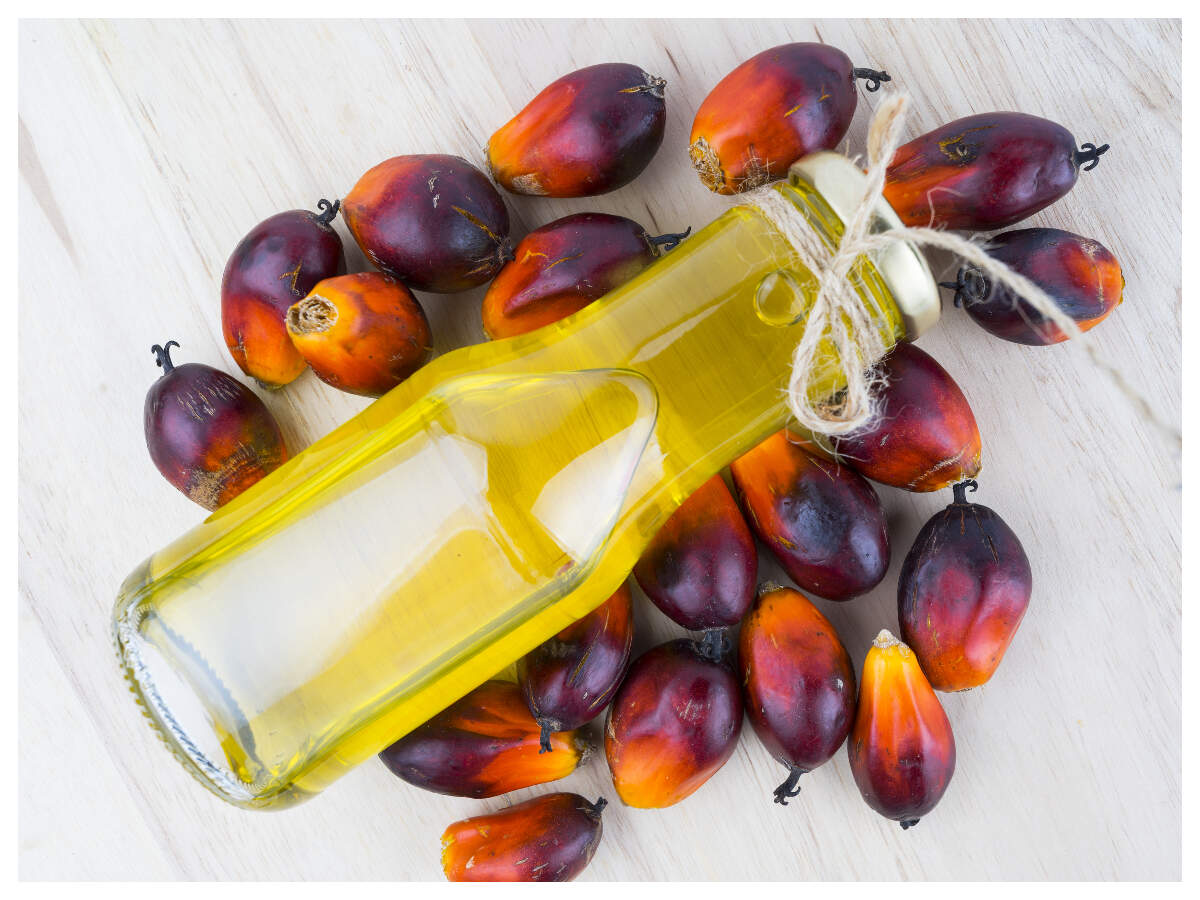
The FMCG companies use palm oil in bhujiyas and biscuits, as this oil adds consistency, texture and structure to the end product without the need for hydrogenation. Palm oil contains unique fatty acids in its triacylglycerol (TAG) composition which comprises an equal amount of unsaturated and saturated fatty acids. According to Zero Oil Cook Book by Dr Bimal Chhajer M.D., The distribution of fatty acids in this oil is 13 percent monosaturated, 7 percent polysaturated and about 80 percent saturated fat. While the saturated fat content of sesame oil is 14, soyabean oil is 15, sunflower oil is 8, olive oil is 1.8 and mustard oil is 6.
03/9What actually happens?
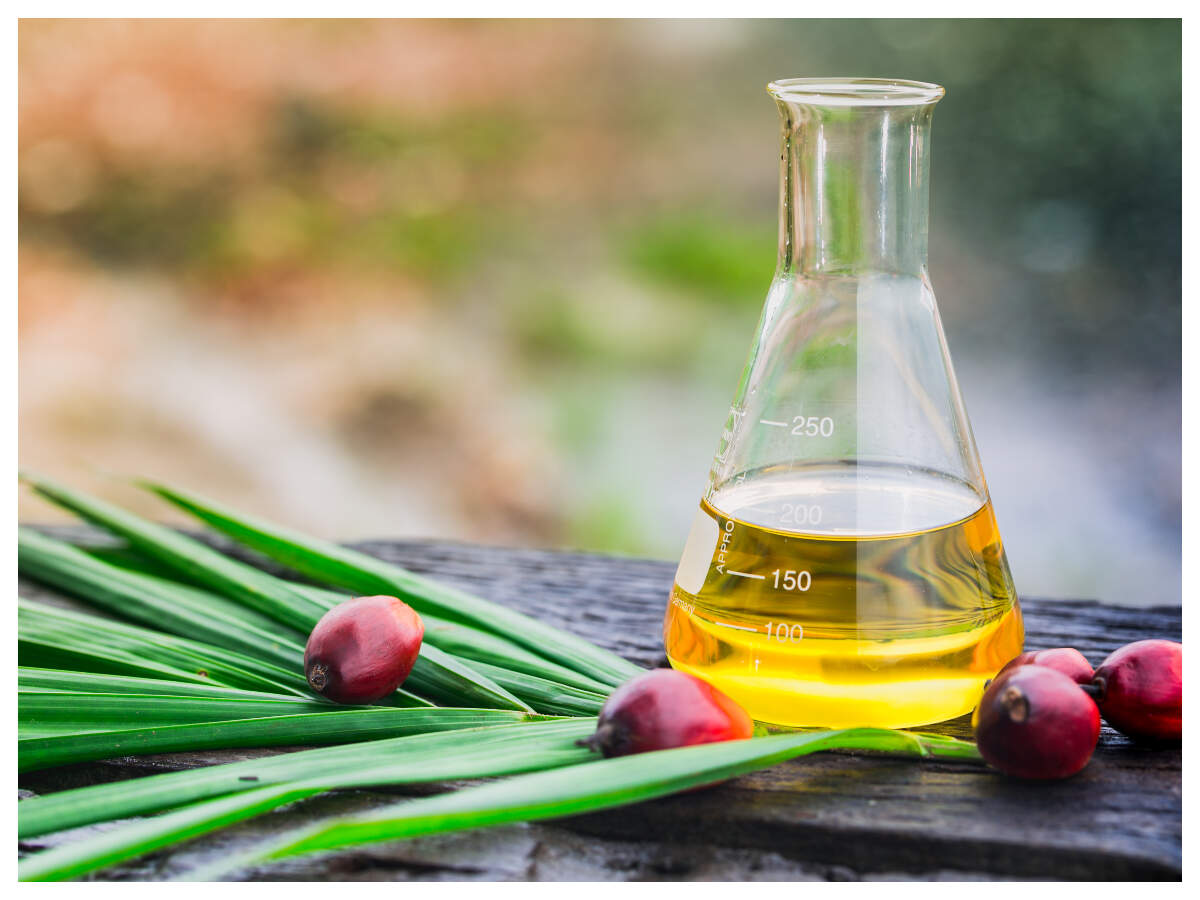
According to the European Food Safety Authority (EFSA), palm oil can be dangerous, because when it is processed at high temperatures, it increases the risk of cancer in the human body. EFSA has found that certain contaminants in palm oil make this happen and when the oil is processed further it causes glycidyl fatty acid esters (GEs) to form. When consumed, GEs break down and release glycidol, a substance known for its carcinogenic effects and exposes you to cancer.
04/9What do nutritionists say
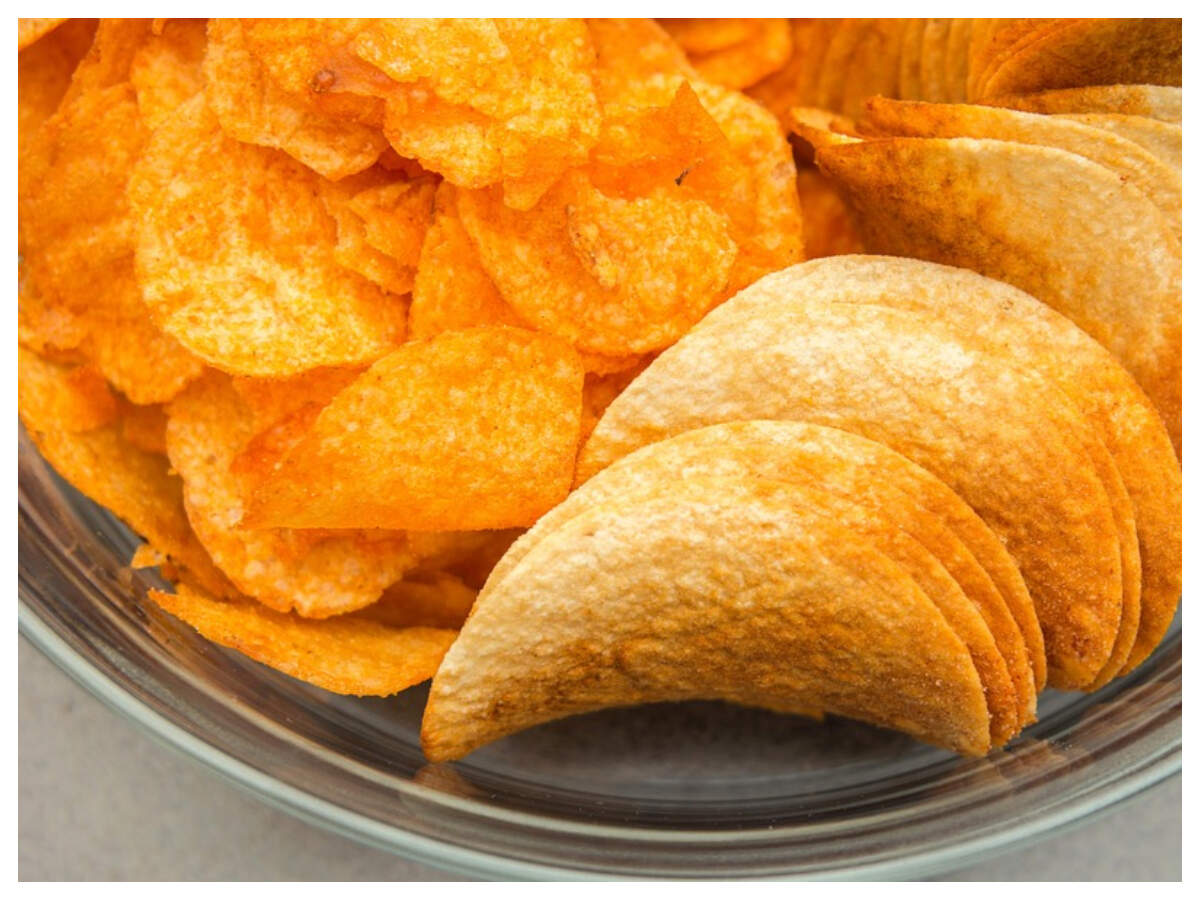
Sandhya Gugnani, a celebrity nutritionist, says, "Palm oil is known to be high in saturated fat content and regular consumption can increase the level of bad cholesterol. Due to high smoking point, it is widely used for cooking as well as in ready-to-eat and processed foods like cereals, cookies, muffins, chocolates, margarine etc.”
05/9Kids and palm oil
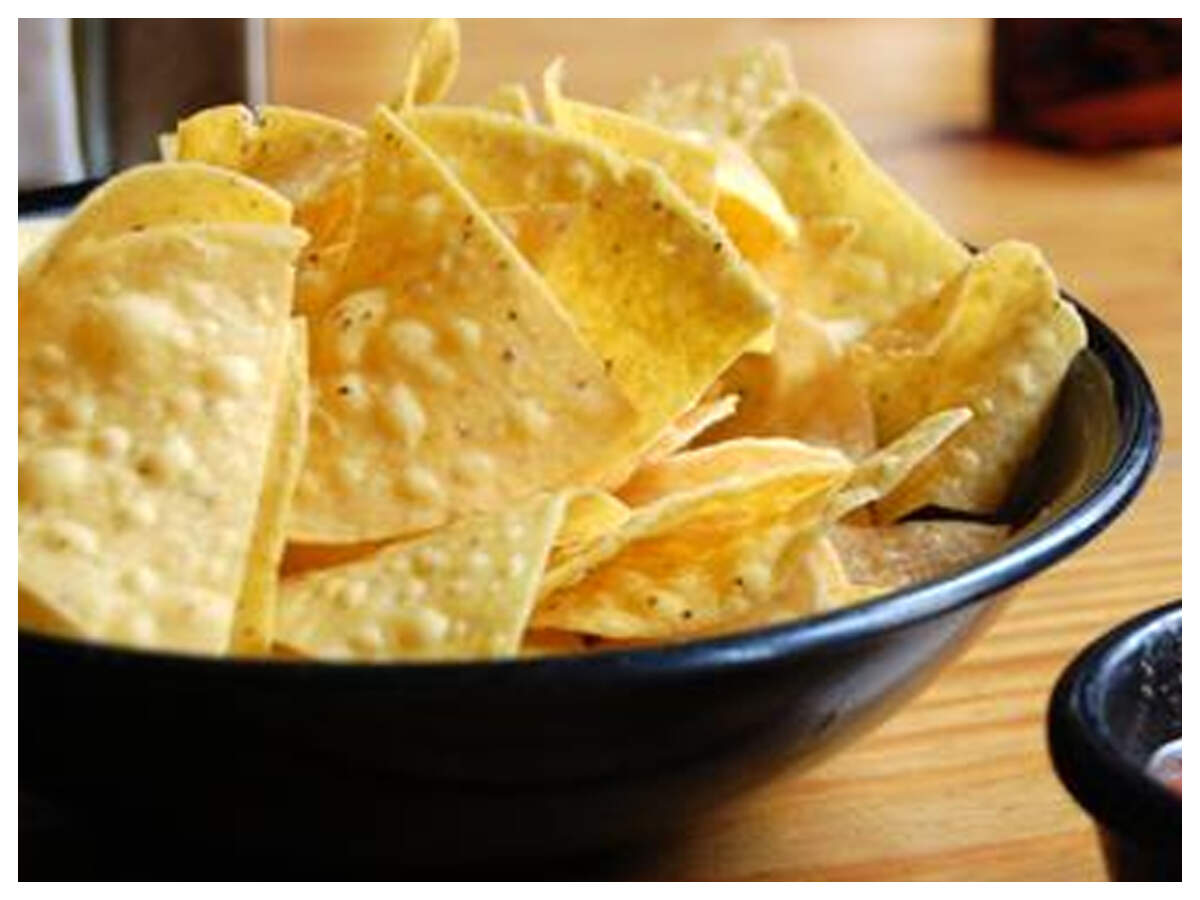
Acording to Sankalp, C.E.O, Goodways Fitness, “Regular consumption of palm oil can lead to diseases like cancer, heart attack, diabetes, nausea, unconsciousness, headache, hormonal issues, and obesity. When palm oil is given to kids, it reduces their memory and concentration power. "
"It adversely affects the eyesight, and gradually they start lacking interest in fun activities that kids of their age love to do. With growing age, it results in asthma, blood pressure, sinus and weakening of muscles”, adds Sankalp, who is also a fitness and lifestyle expert.
06/9Researchers' take
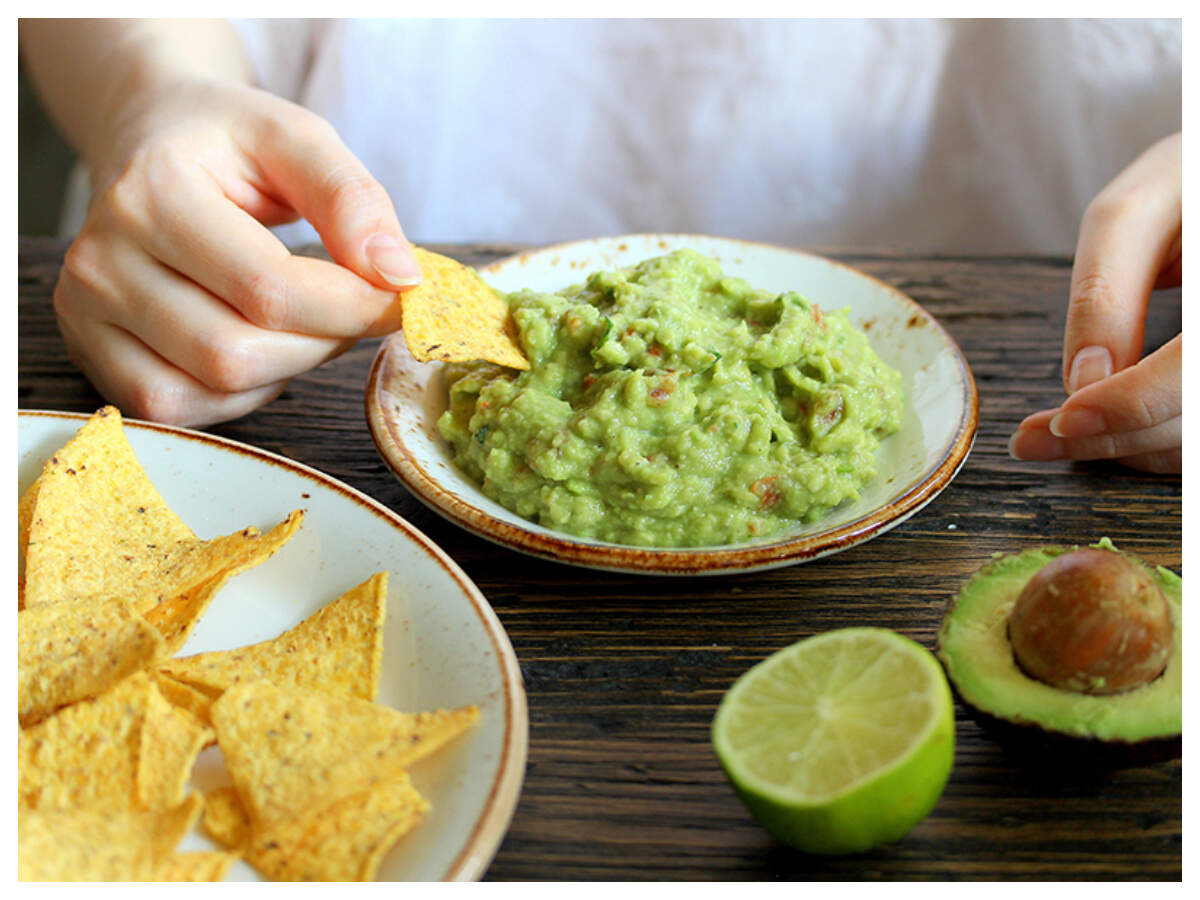
Globally, researchers emphasize moderate use of palm oil and in fact many studies claim that it is as bad as other refined oils. All refined oils may have different fatty acid compositions but almost all of them are bereft of nutritional benefits and loaded with chemicals.
07/9 Is there any alternative?

Though nothing has been medically declared ‘safe’, alternatives like soybean, rapeseed, and coconut, as well as jatropha and jojoba, are considered good for the human body. According to health experts, they have passed the hurdle of technical feasibility but are still under debate in terms of affordability, acceptability, and sustainability.
08/9What should we do?

We should not stick to one oil and keep changing options. It is also important to limit our oil consumption. Our veggies should not be cooked in more than three spoons of oil, for the entire family. Local oils that our grandparents and parents have been consuming are the best options when consumed in moderation.
09/9Verdict
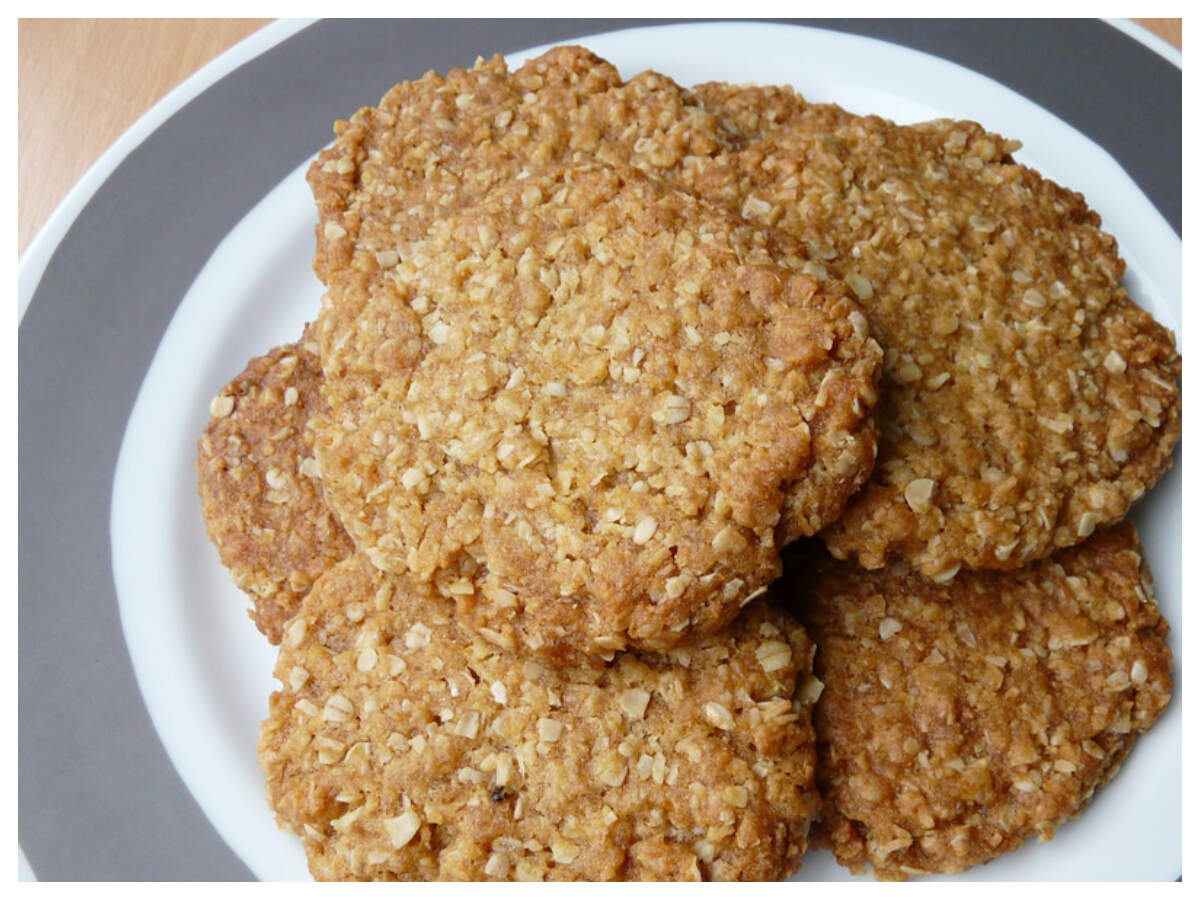
Making cost-effective goods is a primary concern of any market player. But, making goods at the cost of the health of consumers is an ill-practice that needs immediate intervention by the governing bodies, similar to what was done in the case of Maggi. After all, health is important than anything else. Isn’t it?
Disclaimer: Do not consider this as a substitute to medical advice.
‘Plastic food’ rumours a ‘hoax’, says FSSAI

A heap of two varieties of rice.
Wokha, June 20 (MExN): The Food Safety and Standard Authority of India (FSSAI) has informed consumers that the “rumours on plastic cabbage, plastic kurkure, plastic rice and plastic egg are hoax.”
“The video on plastic cabbage was actually about wax food replicas used as displays outside restaurants in Japan,” stated Peterson Pongener, Designated Officer (Food Safety), Kohima Zone, and CMO Wokha, in a press release today.
He stated that the FSSAI has expressed concerns over “fake news and fake videos on plastic food going viral on various social media platforms.”
The FSSAI is said to have raised the issue with Ministry of Electronics and IT last November who has assured to book the perpetrators. The CMO Wokha requested citizens to “refrain from spreading such fake viral videos and not fall prey to such false information creating more panic and confusion.”
Regarding plastic kurkure, stated the CMO Wokha, “FSSAI clarified that the presence of a compound called acrylamide causes the food item to burn when lit with a match stick and it does not contain any plastic material.”
Further, “Dr. Nagappa G Malleshi, former head of Grains, Science and Technology, Mysore, explained that rice is 80 percent starch which makes the cooked rice swell and sticky. So when it is mashed and made into a ball, they entrap air and therefore bounce. He also clarified that plastic rice cannot absorb water nor can it cook. It will only melt and burn. Eggs stored at room temperature for days undergo changes in their texture, smell and appearances. As a consequence of water loss in old eggs, the egg white and yolk portions shrink. It results in a dry and paper like appearance which creates the impression that it is plastic.”
Samples of suspected plastic rice and egg which were recently submitted in the month of June from Wokha district and tested at SPHL, Kohima were found to be natural and devoid of any artificial or plastic elements, informed the officer.
Moreover, random samples are being collected by Food Safety officials of respective districts and tested at SPHL Kohima to check compliance of the standards laid down under the Food Safety and Standards Act 2006, Rules and Regulations, he affirmed.
Jun 20, 2019
Crackdown on adulterated fish sale
SOMETHING FISHY: Members of a youth club stage a protest at Kozhikode mofussil bus stand on Wednesday alleging that fish vendors in the city are charging exorbitant prices for even sardines, taking undue advantage of the trawl ban.
Food Safety squads to continue intensive drive till the end of trawl ban
Following complaints about marketing of adulterated fish, Food Safety squads have intensified their inspections in the district.
The inspections focussing on harbours and fish markets will be continued till the end of trawling ban.
“We have received complaints about marketing of frozen fish without any label mentioning the product details. This is an illegal practice and such stocks will be seized ” said Food Safety Assistant Commissioner P. Aleyamma. “However, we are yet to receive lab reports on the presence of formalin or any other adulterant in such products,” she said.
Though Food Safety officials claimed that the checking was part of their routine activities, they made it clear that the squads would keep tabs on the purchase of formalin-laced fish from other States at a cheaper rates and its resale at local markets. They also said the public would be encouraged to pass on information about such attempts to the Food Safety squads.
During the trawl ban last year loads of formalin-laced fish had been brought to the district from neighbouring States, cashing in on demand. The Food Safety squads blocked suspected vehicles on the district borders and sent them back after collecting the samples.
Officials said there were several instances when the squad destroyed contaminated or formalin-laced stock after conducting inspections and imposed fine on the apprehended carriers. Those engaged in the sale of such stock in local markets were also traced to suppress the network, they said.
Members of the Food Safety squad in the city said they carried out inspections at the Central Fish Market. In early morning operations, Food Safety officials inspected the fishing harbours at Beypore, Chaliyam and Chombal.
An officer attached to the Food Safety office at Vadakara said the samples collected from Chombal were sent to the Regional Analytical Lab at Malaparamba. It was a frozen stock and the preliminary test result was negative showing no presence of formalin or ammonia, he said.
Is Fish Safe For Consumption?
On the one hand, the Health Minister Vishwajit Rane assured us that the fish is safe to eat, after the NCP MLA Churchill Alemao urged the people not to eat fish for next two months. And on the other we were told that the fish samples are tested only during the nightime in a room of Patradevi police outpost. The Health Minister claimed that he and the CM is keeping vigil and monitoring the inflow of fish but their vigil looks tainted. No doubt there is an effort being made to check the fish for formaldehyde but promising 24X7 checking and doing the test only during the night doesnOt justify the pompous speech. Goa needs full-fledged laboratories to be placed at different outposts especially where there is an inflow of fish transportation vehicles from outside the state and strong loyal officials of the Quality Council of India to conduct tests. The amount of fish transported to Goa will definitely be difficult to be checked round the clock although it is promised by the government, thus rapid test kits co-developed by the Food Safety and Standards Authority of India (FSSAI) and the Central Institute of Fisheries Technology (CIFT) could be provided to the consumers, traders, stakeholders and lab technicians. Making these rapid detection kits “CIFTest” commercially available could solve half of the problem. The kits help in the detection of formalin and ammonia. Perhaps, we ourselves could be independently deciding on whether the fish is safe for consumption or not rather than depending on a third person. Then, Whom to believe? Would not be a question popping in our minds.
Sale of substandard food sachets on rise in Kakinada
HIGHLIGHTS
The sellers opt for sale of these items along with sachets of standard companies
Kakinada: The sale of substandard food items in sachets is on the rise in East Godavari. Traders across the district opt for making of these items and circulate to wholesellers who in turn sell them to small traders like pawnshops, petty traders, and roadside vendors. Though the same is going on for years, the concerned department Food Safety and Standards Authority of India (FSSAI) and the Legal Metrology department under the State government seems to have no clues on this trade. According to reliable information, the making and supply of substandard sachets at Rs 2 and Rs 3 is being carried out by traders in Biccavolu, G Mamidada, Dairy Farm Centre and Jaganaickpur in Kakinada city and in neighboring areas in the district. The sellers opt for sale of these items along with sachets of standard companies.
Social activist and president of Kakinada Municipal and Mandal Consumers Welfare Association D Ramana Raju observed that in this trade, the supply of food items in sachets for Rs 2 and Rs 3 should be checked immediately as there is no clue of what the makers of these use as ingredients. Raju said the ingredients in the sachets would be hazardous for health as majority of the consumers are children. Former president of IMA Kakinada branch Dr Ram Swaroop Jawahar said the consumption of food items made from substandard ingredients will lead to stomach disorders, diarrhea and worm's infestation. Speaking on the issue, FSSAI Inspector Vennalapu Rukmayya said that he is not aware of such trade going on in large scale in the district in wholesale and retail markets. He said he would act on the makers if anyone lodges complaint in this regard.
Bad taste - Chemical still getting into mangoes
A mango stall at the wholesale market on Jayamahal Main Road in Bengaluru on Wednesday.
Bengaluru, DHNS: A raid on mango stalls in Jayamahal found that a majority of the stalls were using banned calcium carbide crystals to ripen mangoes.
Officials of the Food Safety and Standards Authority of India (FSSAI) found that 15 out of 25 stalls were using small amounts of carbide crystals to ripen mangoes. Deputy director of the FSSAI’s city squad Kamala Bai B said use of calcium carbide, known to be carcinogenic, has been strictly prohibited in foods.
The sellers were levied a penalty of between Rs 5,000 and Rs 10,000 depending on their economic status.
Jubin George Joseph, the chief operating officer of Ramaiah Advanced Testing Labs, which tests for carbide in mangoes, said the lab frequently discovers traces of carbides in mangoes sent for testing. “Over the last 10 years, five out of 10 samples showed traces of carbide. But in recent years, after a series of government raids, we noticed a drop in its use. But with a decline in government raids, the rate is picking up again,” Joseph said.
He added that incidences of carbide use appear to increase off-season. “At that time, we see a 50% increase in the use of carbides in the samples we receive,” he said.
Raghu K C, a food expert, said the government itself is to blame for the use of carbides. “Until three years ago, official editions of the Indian Council of Agricultural Research’s Textbook of Horticulture promoted the use of carbides.”
Why eateries in India do not have a food safety licence
01/6FSSAI food licensing guidelines

According to the latest NRAI India Food Services Report 2019, of the 2.49 million food business operators (FBOs) in the country, only 467,000 have an FSSAI licence. This report included restaurants, eateries, dhabas and kiosks, among others. All thanks to the report, it has been found that only one out of five eating out places in India has a food safety licence. This report has raised a question on the functioning of food businesses and governing bodies.
02/6Why eateries do not have a food safety licence?

According to a research, it has been found that the lengthy process of getting a licence and the must-haves to get the approval from the governing body, makes it tricky for the local and small eateries to attain licence and to avoid the chaos, they end up selling food without any.
03/6FSSAI’s take

According to FSSAI’s letter to commissioners of food safety of all states, Food and Drug Administration across states has been asked to issue licences to eateries within two months, if no inadequacy is found. FSSAI has also instructed that food businesses can start functioning even if registration is not granted.
04/6Why licensing is necessary?

It has been found that India’s food sector generates revenue worth about Rs 4.23 lakh crore every year but sadly, 65% of the industry is still unorganised. NRAI’s target is to drop these numbers to 57% by 2023. This step is taken to streamline public health and taxation system that is at risk because of the unorganised establishments.
05/6Impact on the food market

The unorganized market has badly impacted more than two-thirds of India’s top restaurants and cafe chains with losses or lower profit during the last financial year due to the rollback of input tax credit (ITC) and hyper-local delivery services.
06/6Verdict

This step by FSSAI and FDA will not only improve the profit margin of the market players but will also smoothen the functioning of the food businesses and make the taxation system clearer.
Jun 19, 2019
To stay truly organic
The agriculture department has launched good agricultural practices in 12,000 hectares. It has already collected samples from around 300 clusters to get them tested at accredited labs under the Agricultural and Processed Food Products Export Development Authority. (In Pic): A cabbage farm in Kanthallur in Idukki district
You have organic shops dime a dozen even in small towns, but there has been no guarantee on the quality of products they sell. The Kerala Commissionerate of Food Safety has decided to step up measures to ensure quality organic produce by tightening norms including fixing logos on them.
THIRUVANANTHAPURAM: With fake organic products flooding the markets across the state, the Kerala Commissionerate of Food Safety (KCFS) has decided to step up measures to ensure quality organic produce for the consumers. Currently, unorganised players without any mandatory certification are selling organic products at exorbitant rates as the state has failed to regulate them.
To end the malpractices in the sector, the Food Safety and Standards Authority of India (FSSAI) has mandated organic logo in products being sold across the nation from April 1, 2019.
To begin with, the state authorities are planning to give organic certification for rice and pepper being produced in Palakkad and Idukki respectively by next month.
According to officials, there are around 700 hectares of pepper cultivation in Idukki and over 800 hectares of paddy cultivation in Palakkad.
As part of its effort to certify organic produce, the state food safety commissionerate has tied up with the agriculture department to ensure organic food products through the ‘farm to plate’ concept by promoting good farming practices. The commissionerate would provide a ‘wrapper’ which would be covered over the products showing the FSSAI licence and farmers’ unique ID for facilitating the consumers to pick the most authentic organic product.
“We get complaints regarding the fake organic products being sold in the state. Organic branding by food safety would help put an end to the cheating in the market. Food safety officials and agriculture department officials will work hand-in-hand in each district to make the initiative a success,” a food safety official said.
Currently, there are over 50,000 hectares of farmlands in the state. As part of the centrally-sponsored scheme Paramparagat Krishi Vikas Yojana (PKVY), the agriculture department has launched good agricultural practices in 12,000 hectares of farmland in the state.
An official of the agriculture department said that the scheme was in phase II. “We launched the scheme a year back and the transition time of the farmland is three years. We are in the second year and our farmers are very well aware of the ill-effect of pesticides. We have formed clusters among the farmers and selected a lead resource person to represent each cluster. Each cluster covers around 20 hectares of farmland,” said the official.
“The farmers engaged in organic farming should get the product tested at an empanelled lab under the agriculture department to get the necessary registration from the food safety,” the official added.
The agriculture department has already collected samples from around 300 clusters to get them tested at accredited labs under the Agricultural and Processed Food Products Export Development Authority (APEDA).
“We collect the samples and send them for scrutiny at the APEDA-accredited lab in Mumbai. There are around 16 such labs in the country which tests the product to check if it’s of export quality,” said the official.
Distribution of packaged drinking water will be streamlined: FSSAI
‘Association of distributors being formed’
The supply of packaged drinking water in the city, which is beset with irregularities, will soon be streamlined, said officer in charge of Food Safety and Standards Authority of India (FSSAI) in Mysuru Chidambara S.
Pointing out that an association of distributors of Bureau of Indian Standards (BIS)-registered manufacturers was being formed following a suggestion from the FSSAI, Dr. Chidambara said the bona fide members of the association will be certified by the local authorities.
Malpractices
With regard to the malpractices in the supply of packaged drinking water, he said instances of people filling up 20-litre cans from MCC’s RO plants and selling them to consumers were few. However, he admitted that he had seen a video provided by the distributors of a few people filling up seven to eight cans from a MCC RO plant in Vijayanagar 4th Stage. “But, such cases may be few,” he said.
He said the FSSAI had forced the closure of five to six packaged drinking water manufacturers, who did not possess registration from BIS, in Mysuru during the last five to six months.
In Mysuru district, there were 42 BIS-registered packaged drinking water manufacturers, including 11 in the city. Each unit is believed to supply about 1,000 20-litre cans every day.
Are packaged drinking water cans safe?
The packaged drinking water supplied by bona fide distributors from ISI-registered manufacturers goes through a series of procedures.
Distributors say a large number of fraudulent suppliers fill up empty cans directly from taps
The expansion of the market for packaged drinking water, particularly in 20-litre cans, in the city is feared to have spawned a large number of fraudulent suppliers, who are sourcing drinking water from unauthorised sources.
A section of the packaged drinking water distributors in Mysuru would have you believe that the water you consume from the 20-litre cans is not processed at ISI-registered manufacturers. A large number of fraudulent suppliers have begun filling up empty cans from the water made available not only at the Mysuru City Corporation (MCC)’s Reverse Osmosis (RO) water plants set up in different wards across the city, but also directly from the taps. Some suppliers are sourcing water from unauthorised drinking water packaging units that do not follow the procedure for processing the water, a distributor, Chandrashekar M., told The Hindu on Tuesday.
“Many have taken to doing business by filling up water cans from the RO water plants set up by the MCC and charitable organizations across the city and on the outskirts”, Mr. Chandrashekar complained. “They just need to pay a small fraction of the amount they collect from the buyers”, he alleged.
Worse, many others are collecting from taps and other sources even in cans bearing ISI mark and supplying them to the gullible public, endangering their health in the process, he said.
The packaged drinking water supplied by bona fide distributors from ISI-registered manufacturers goes through a series of procedures. “Firstly, the water has to be drawn from a borewell and should have a constant TDS (total dissolved salts). Next, it goes through a process of RO, ionisation and UV purification”, said Mr. Chandrashekar. But, in the case of the packaged drinking water supplied by many fraudulent suppliers, this is not the case, he warned.
Hence, Mr. Chandrashekar and many other suppliers in Mysuru and neighbouring Mandya dealing with packaged drinking water processed by ISI-registered manufacturers have come together to form the Sri Chamundeshwari Mysuru-Mandya District Packaged Drinking Water Suppliers Association.
“Our members will be the authorised suppliers of ISI-registered manufacturers approved by the Food Safety and Standards Authority of India (FSSAI). On demand, they will be furnish their credentials, which will help the consumers distinguish between fraudulent suppliers and bona fide ones”, said Nithin Gowda, Vice-President of the Association, which is scheduled to be inaugurated by Designated FSSAI officers of Mysuru and Mandya Chidambara S. and Balakrishna B.S. respectively in Mysuru on June 21.
Only 4 food inspectors in Greater Hyderabad
HIGHLIGHTS The Greater Hyderabad Municipal Corporation (GHMC) seems to have neglected the health of the citizens of the city, as they have only four food inspectors as opposed to a required strength of 30.
Hyderabad: The Greater Hyderabad Municipal Corporation (GHMC) seems to have neglected the health of the citizens of the city, as they have only four food inspectors as opposed to a required strength of 30. There are around 30 circles in the city and one food inspector should be appointed for each circle to keep tab on quality of food provided by food joints, roadside pushcarts, food vendors and hotels, according to the officials of the GHMC.
For the huge city population and more number of food joints, roadside pushcart vendors and hotels, the GHMC has only four food inspectors, including two Gazette food inspectors, one food inspector and an assistant food inspector in Food Safety Department to look after the quality of the food provided at the hotels and food joints.
There were seven to eight food inspectors when it was Municipal Corporation of Hyderabad (MCH) and then the staff has been reduced every year, and now it has reached four, said an official at GHMC.
The responsibility of the food inspectors is to ensure that all registered restaurants and eateries abide by the acceptable standards of health and hygiene. Some 26 food inspector posts are lying vacant since a few years and either state government or civic body is showing interest to fill up the vacancies that play a vital role in maintaining the health of the common man.
Even though the 26 posts are sanctioned a few years ago, the recruitment has not been done till date, as it is pending at the government level, said a GHMC official. This shows that the Food Safety Department has been neglected in the GHMC.
The food inspectors at Food Safety Department conduct raids on regular basis on hotels and restaurants to check the food quality and cleanliness maintaining in the kitchens of the hotels along with medical department staff, due to lack of adequate food inspectors in GHMC.
Speaking to the Hans India, Sudarshan Reddy, a food inspector said, "We are trying to fill the vacant posts, and we have written a letter requesting the government to fill the vacancies in the Food Safety Department. We are waiting for the reply from the government." It is very difficult to ensure hygiene and safety in all hotels across the city with less staff, the official admits.
Food safety is highest priority of my govt: Goa health minister
PANAJI: Health minister Vishwajit Rane said Nationalist Congress Party (NCP) MLA Churchill Alemao is trying to create panic among people asking them not to eat fish till August 15. On Monday, Alemao urged people to refrain from consuming fish during fishing ban period due to formalin scare.
Urging people to ignore Alemao’s appeal, Rane said, “There is nothing to worry and fish available in the markets of Goa is safe for consumption. Food safety is the highest priority of my government. A monitoring system has been put in place. The government is very serious on the issue. It knows what is to be done.”
Talking about measures taken, he said random checks are conducted and samples collected for testing. A whole protocol has been laid down. It is mandated that fish has to be transported in insulated vehicles. The vehicles with inadequate documents but transporting fish are not to be allowed to enter the state, he said.
“Chief minister Pramod Sawant, deputy chief minister Vijai Sardesai and I, had a joint meeting to discuss this issue,” he said reacting to NCP's MLA's appeal.
Three food outlets shut temporarily after raids
‘Subhojanam’ to provide training to those handling food
The city Corporation conducted raids across 52 restaurants and catering centres on Tuesday, closing down three of them temporarily for preparing food in unhygienic conditions.
Following the raid, Mayor V.K. Prashant also announced the launch of the civic body’s ‘Subhojanam’ project to provide mandatory training to those handling food in the city’s restaurants.
The raid was conducted by four special squads in different parts of the city. Misban hotel at Sreekaryam, Ammu catering service in Attipra, and one more catering service without a name were temporarily closed down to improve their working environment.
According to Corporation health officials, there was no issue with the quality of the food served here.
Notices served
In addition, notices were served on 47 more restaurants and catering services for not having proper system for segregated disposal of waste.
The Corporation had recently published an approved list of 19 firms that have been licensed to collect biodegradable waste from restaurants in the city.
The restaurant owners were asked to enter into a contract with these firms.
Identity cards
On completion of a week-long training as part of Subhojanam project, participants will be provided with identity cards.
Once all the phases of the training are completed, the civic body will make it mandatory that only those holding these identity cards can handle food in restaurants, bakeries, tea stalls, and catering units.
The training will be provided by experts from the industry, along with health inspectors of the Corporation. The training modules will be prepared in July.
In August
The training process is expected to begin by August. Those interested in working in the sector will also be provided training.
The Corporation is also mulling the inclusion of basic training in Malayalam language with the help of the literacy mission to migrant workers who make up a majority of workers in the restaurant industry.
Mizoram has taken many steps to ensure food safety: Minister
The Mizoram government has taken several steps to check the standard of food under the provisions of the Food Safety and Standards Act, 2006 and FoodSafety and Standards Rules and Regulations 2011, Health Minister Dr R Lalthangliana informed the state Assembly Tuesday.
Replying to questions from Dr Vanlaltanpuia of the ruling Mizo National Front (MNF), Lalthangliana said that inspection of hotels and restaurants and sampling of some food products have been conducted by the food administration officials.
Most of the food samples were sent to State Public Health Laboratory in Guwahati, he said.
A food testing laboratory is being set up at Zemabawk locality in Aizawl where equipment and machinery purchased by the state commerce and industries department have been already installed, he said.
He said that the new laboratory would be commissioned after the equipment are handed over to the health department.
Jun 18, 2019
FSSAI to bring in new labelling norms for gluten-free products
The regulator to address cross-contamination issues and remove ‘low gluten’ provision
The Food Safety and Standards Authority of India (FSSAI) plans to introduce new labelling norms for gluten-free claims on products as well as address the issue of cross-contamination of such products with gluten- containing products during manufacturing.
In a guidance note for manufacturers and consumers on gluten-free foods, FSSAI said that it is in the process of adding labelling provisions for addressing the issues of cross contamination.
Advisory on declaration
Advising food manufacturers to avoid such cross contamination, it said that when a gluten-free product is manufactured in a plant where gluten-containing products are also manufactured, it should be declared on the label. It should read, “Processed in a plant where gluten containing products are manufactured”.
The regulator reiterated that only foods that contain 20 mg gluten/kg or less can be labelled as gluten-free, as per its current standards.
“FSSAI is also in the process of removing the provisions relating to the standard of “Food specially processed to reduce gluten content to a level 20-100 mg/kg”…. and ‘Low Gluten and warning for low gluten’ from its regulations,” it added.
The regulator has said that packaged food manufacturers should establish separate storage and preparation areas for gluten-free and gluten-containing ingredients. It said that they “should have separate production areas and equipment with controlled air-low between the two production areas,” to reduce the potential for air-borne flour dust contamination.
The regulators said that hotels and restaurants are advised to keep gluten-free options at their outlets.
The FSSAI said that consumers should be aware when seeking gluten-free options that “wheat-free” foods may contain grain such as rye and barley.
It has advised consumers to check the label when buying gluten-free products and look for certification mark, ingredients , allergen warning among others.
Serious concerns over Bt brinjal
There is no evidence that genetically modified brinjal will benefit farmers
A month ago, Bt brinjal genetically modified (GM) to resist the brinjal fruit and shoot borer (an insect), was found growing illegally in Haryana. This was a different Bt brinjal from the one developed by the Indian company, Mahyco, in which Monsanto has a 26% stake. Mahyco’s Bt brinjal has been under a moratorium since 2010. Even as the government clamped down on the illegal GM crop, some farmer groups have demanded the release of Mahyco’s Bt brinjal and other GM crops in the regulatory pipeline. It is true that the moratorium was imposed by the then Environment Minister Jairam Ramesh, despite being cleared by the Genetic Engineering Appraisal Committee (GEAC), the apex regulatory body for GM crops. But is Bt brinjal actually ready for release?
The impacts
Before imposing the moratorium, Mr. Ramesh had sought comments from a range of experts and concerned groups on environmental impacts and implications for consumers and farmers. Despite demands from activists and social scientists, the Ministry of Agriculture has not offered evidence that Bt brinjal will benefit farmers. Ironically, the National Institute of Agricultural Economics and Policy Research anticipates that if Bt brinjal performs as Mahyco proposes, brinjal output will increase and retail prices will fall, benefiting consumers far more than farmers. The report ignores the scenario that companies might charge premium prices for Bt brinjal seeds, in which case farmers may not benefit at all.
On biosafety issues, scientific opinion is divided down the middle. While some scientists such as Deepak Pental of Delhi University were in favour of releasing Bt brinjal, others such as the late Pushpa Bhargava, entomologist David Andow of the U.S., and the then Vice-Chancellors of the Acharya N.G. Ranga Agricultural University and the Dr. Y.S.R. Horticultural University highlighted crucial deficiencies in the characterisation of Bt brinjal, and in the environmental impacts assessment. The ecologist, Madhav Gadgil, warned of contamination of India’s diverse brinjal varieties. Biodiversity is critical for nutrition and sustainability, and the government’s own task force on biotechnology (2004) had recommended that no GM crop be allowed in biodiversity-rich areas.
Further, a majority of the technical expert committee appointed by the Supreme Court (in the public interest litigations over GM crops), recommended a ban on genetically modifying those crops for which India is a centre of origin or diversity. Brinjal happens to be such a crop.
Nutrition issues
In terms of nutrition, there seem to be some significant differences between Bt and ordinary brinjal. Many health researchers and professionals, and scientists such as immunologist David Schubert of the Salk Institute, U.S. and Suman Sahai of Gene Campaign have argued that Bt brinjal poses risks to human health. M.S. Swaminathan and V.M. Katoch, then the Director General of the Indian Council of Medical Research, asked for long-term (chronic) toxicity studies, before taking any decision on Bt brinjal. Further, they asked that these be conducted independently, instead of relying exclusively on Mahyco for data.
Bt brinjal found no support from State governments. Kerala and Uttarakhand asked for a ban on GM crops. States with substantial brinjal cultivation, i.e. West Bengal, Odisha, Bihar opposed the release pending rigorous, extensive testing. As did Chhattisgarh, Tamil Nadu, Karnataka, Madhya Pradesh, and undivided Andhra Pradesh. These States were ruled by parties across the political spectrum. In 2012 and 2017, respectively, the Parliamentary Standing Committee on Agriculture and the Committee on Science & Technology, Environment and Forests assessed the GM controversy. Both committees expressed grave concerns about lapses in the regulatory system. In fact, the Committee on Agriculture was so alarmed by the irregularities in the assessment of Bt brinjal, that it recommended “a thorough probe by a team of eminent independent scientists and environmentalists”, which never happened. Further, both committees endorsed labelling GM foods to protect a consumer’s right to know. However, since retailing is largely unorganised, enforcing truthful labelling is a logistical nightmare, and the Ministry of Agriculture believes it is impractical. The Food Safety and Standards Authority of India has only recently begun putting labelling rules into place.
No scientific consensus
In sum, there is a moratorium on Bt brinjal because there is no scientific consensus on its safety and efficacy, and because the States and Parliament have profound misgivings about the regulatory system. In recent years, pests have developed resistance to Bt cotton, forcing farmers to spray lethal pesticides. This led to over 50 deaths by pesticide-poisoning in Vidarbha in 2017. A GM-based strategy of pest control is unsustainable, all the more so since farmers, already pressed for land, ignore the government’s recommendation to plant refuge crops.
We cannot wish all these concerns away simply because some farmers want to try Bt brinjal, or farmers in Bangladesh have been cultivating Bt brinjal since 2013. Farmers do not and cannot assess long-term impacts on ecology and health, which needs more rigorous and sensitive studies than those conducted so far. Yet, in the nine years since the moratorium, there has hardly been any progress toward addressing these issues. If anything, the problem of sustainable, remunerative farming has become more acute, and alternative strategies such as organic and zero budget natural farming, which do not allow GM seeds, are gaining ground.
At the very least, the government must detail the steps it has taken since 2010 to address the scientific lacunae, clarify precisely how Bt brinjal will benefit farmers, put the infrastructure to ensure labelling into place, and demonstrate how Bt brinjal fits in with sustainable farming and biodiversity conservation. As things stand, Bt brinjal runs counter to the framework for agricultural development and farmers’ well-being devised by parliamentary panels and the government’s own task forces and expert committees.
Aniket Aga teaches environmental studies at Ashoka University and is writing a book on the science and politics of GM food crops in India. E-mail: aniket.aga.2016@gmail.com
Jun 17, 2019
Subscribe to:
Posts (Atom)
























